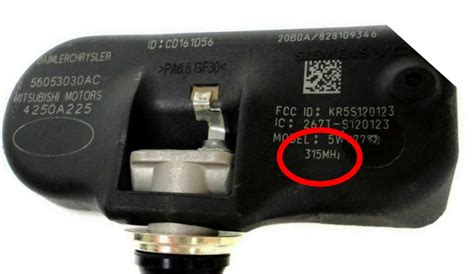TPMS Frequency: The Secret to a Longer Tire Life
Maintaining optimal tire pressure is crucial for maximizing tire lifespan, improving fuel efficiency, and enhancing vehicle safety. Tire Pressure Monitoring Systems (TPMS) are designed to alert drivers to low tire pressure, but did you know that the frequency at which your TPMS operates can indirectly influence your tire's longevity? Understanding this subtle connection can help you proactively protect your investment and ensure safer driving.
What is TPMS and How Does it Work?
TPMS stands for Tire Pressure Monitoring System. This critical safety feature, mandated in most vehicles since 2007, uses sensors inside each tire to constantly monitor pressure and temperature. These sensors transmit data wirelessly to a receiver in your vehicle, typically displaying the pressure in each tire on your dashboard. When pressure drops below a pre-set threshold, a warning light illuminates, alerting you to potential issues. There are two main types of TPMS:
- Direct TPMS: Uses sensors inside the tire that actively transmit pressure readings. These sensors require battery replacement every 5-10 years.
- Indirect TPMS: Relies on the ABS (Anti-lock Braking System) sensors to detect variations in wheel speed, indirectly inferring tire pressure. While less precise, it's less expensive to maintain as it doesn't require individual tire sensors.
How Does TPMS Frequency Relate to Tire Life?
While TPMS doesn't directly extend tire life, its frequency of monitoring and alerting plays an indirect yet significant role. A system that promptly alerts you to even a slight pressure drop enables you to address the issue quickly. Driving on underinflated tires, even slightly, can lead to:
- Increased tire wear: Underinflation causes increased friction and heat generation, leading to uneven wear, especially on the outside edges.
- Reduced fuel efficiency: Underinflated tires require more energy to roll, resulting in lower gas mileage.
- Compromised handling and braking: Low tire pressure affects steering responsiveness and braking performance, compromising safety.
A frequently monitored system, essentially constantly checking the pressure, gives you a heads-up before these problems become significant, allowing for timely inflation and preventing premature wear.
How Often Should My TPMS Be Checked?
While your TPMS automatically monitors your tire pressure, you should still perform regular manual checks. Ideally, check your tire pressure at least once a month, and always before long trips. This is especially important in extreme temperature variations, as temperature significantly impacts tire pressure. Cold weather causes pressure to drop, while hot weather increases it.
What are the Common TPMS Problems?
- Sensor Battery Failure: Direct TPMS sensors require battery replacement after a few years. A malfunctioning sensor may give false readings or fail to transmit data.
- Sensor Damage: Sensors can be damaged by impacts, improper tire mounting, or corrosion.
- Receiver Malfunction: The receiver in your vehicle may malfunction, preventing it from receiving data from the sensors.
How to Extend the Life of Your TPMS Sensors?
- Proper Tire Installation: Ensure tires are mounted and balanced correctly to protect the sensors from damage.
- Regular Monitoring: Monitor your TPMS regularly and address any alerts promptly.
- Professional Service: Get any TPMS issues diagnosed and repaired by a qualified mechanic.
Conclusion: Proactive Maintenance for Lasting Performance
TPMS is more than just a safety feature; it’s a tool for proactive tire maintenance. While the frequency of the system's monitoring doesn’t directly affect the tires themselves, the rapid detection of pressure issues allows for timely intervention, preventing excessive wear and tear. Regular manual checks, combined with a functioning TPMS, contribute significantly to maximizing the life of your tires and ensuring a safer, more efficient driving experience. Understanding the role of your TPMS frequency in this equation empowers you to be a more informed and proactive driver.

